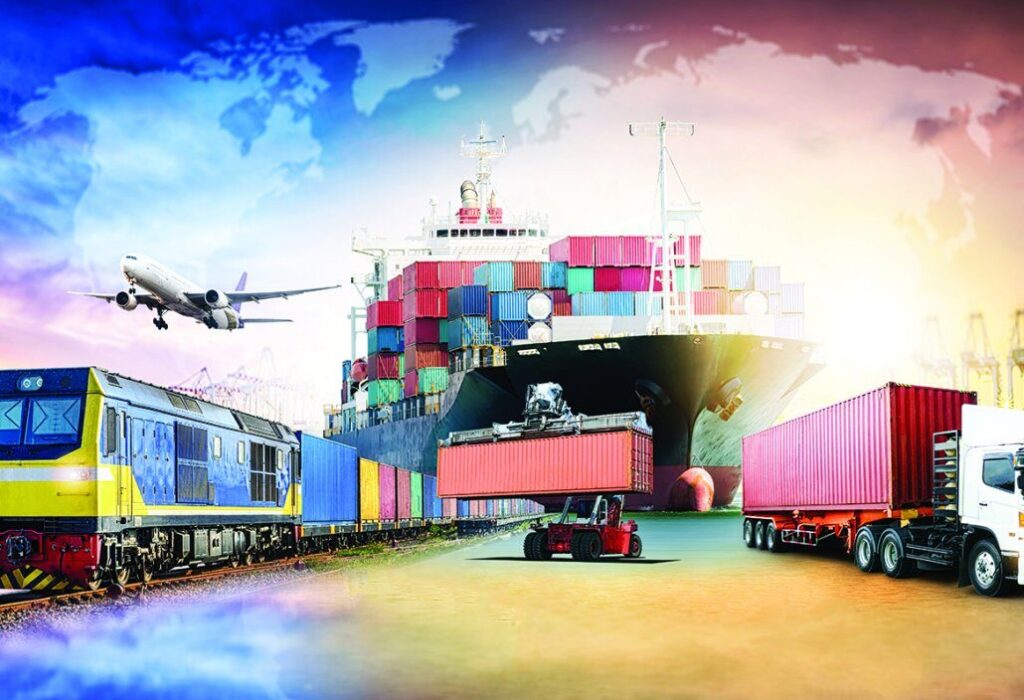China is one of the world’s largest exporters, and the Netherlands is one of its major trading partners in Europe. If you are looking to import goods from China to the Netherlands, you need to know the best ways to ship your products, the costs involved, the customs procedures, and the regulations that apply to your business. In this article, we will cover everything you need to know about shipping from China to the Netherlands, including:
Why import from China?

There are many reasons why importing from China can be beneficial for your business, such as:
- Lower production costs: China has a large and skilled labor force, abundant natural resources, and advanced manufacturing facilities that can produce high-quality goods at competitive prices.
- Diverse product range: China offers a wide variety of products across different industries, such as electronics, clothing, furniture, toys, machinery, and more. You can find almost anything you need in China, or have it customized according to your specifications.
- Fast delivery time: China has a well-developed logistics network that can ship your goods quickly and efficiently to the Netherlands and other destinations around the world. You can choose from different shipping methods, such as air, sea, rail, or express, depending on your budget and urgency.
- Market potential: China has a huge and growing domestic market that can offer new opportunities for your business. You can sell your products to Chinese consumers, or source local materials and components for your production. You can also leverage China’s trade agreements and partnerships with other countries and regions, such as the European Union, to expand your market reach.
Types of shipping methods

There are four main types of shipping methods that you can use to ship your goods from China to the Netherlands: air freight, sea freight, rail freight, and express courier. Each method has its own advantages and disadvantages, depending on the size, weight, value, and nature of your goods, as well as the delivery time and cost. Here is a brief overview of each method:
- Air freight: This is the fastest and most reliable way to ship your goods from China to the Netherlands, as it usually takes only 10-15 days to deliver. However, it is also the most expensive option, as it charges by the weight and volume of your goods. Air freight is suitable for small and urgent shipments, or for high-value and perishable goods that require special handling and care.
- Sea freight: This is the most economical way to ship your goods from China to the Netherlands, as it charges by the container size and quantity of your goods. However, it is also the slowest option, as it can take up to 30-35 days to deliver. Sea freight is suitable for large and bulky shipments, or for low-value and non-perishable goods that do not have a strict deadline.
- Rail freight: This is a relatively new and emerging way to ship your goods from China to the Netherlands, as it offers a balance between speed and cost. It usually takes 30-35 days to deliver, and it charges by the weight and volume of your goods. Rail freight is suitable for medium-sized and regular shipments, or for goods that are sensitive to temperature and humidity changes.
- Express courier: This is a convenient and flexible way to ship your goods from China to the Netherlands, as it offers door-to-door delivery and tracking services. It usually takes 10-15 days to deliver, and it charges by the weight and volume of your goods. Express courier is suitable for small and occasional shipments, or for documents and samples that need to be delivered quickly and securely.
Choosing the right shipping method for your business
The best shipping method for your business depends on several factors, such as:
- The type and quantity of goods you are shipping: Different goods have different requirements for shipping, such as size, weight, value, fragility, shelf life, and safety. You need to choose a shipping method that can accommodate your goods and protect them from damage and loss during transit.
- The destination and origin of your goods: Different countries and regions have different regulations and restrictions for importing and exporting goods, such as tariffs, taxes, duties, licenses, permits, and certificates. You need to choose a shipping method that can comply with the rules and procedures of both China and the Netherlands, and avoid any delays or penalties at the customs.
- The delivery time and cost of your goods: Different shipping methods have different delivery times and costs, depending on the distance, route, and mode of transportation. You need to choose a shipping method that can meet your budget and deadline, and provide the best value for your money.
Understanding customs and import regulations

When shipping from China to the Netherlands, you need to understand and follow the customs and import regulations of both countries, to avoid any delays, fines, or confiscation of your goods. Here are some of the main aspects that you need to consider:
- Customs clearance: This is the process of declaring and verifying your goods at the customs, and paying any applicable fees and taxes. You need to provide accurate and complete information about your goods, such as the description, quantity, value, origin, and destination, and submit the required documents, such as the commercial invoice, packing list, bill of lading, certificate of origin, and any other certificates or licenses that your goods may need. You also need to ensure that your goods are properly packed and labeled, and that they do not contain any prohibited or restricted items, such as drugs, weapons, animals, plants, or counterfeit goods.
- Import duties and taxes: These are the fees and charges that you need to pay to the customs for importing your goods into the Netherlands. The amount of import duties and taxes depends on the type, value, and origin of your goods, as well as the trade agreements and policies between China and the Netherlands. Generally, the import duties and taxes consist of the following components:
- Import duty: This is a percentage of the customs value of your goods, which is calculated based on the invoice price, freight cost, and insurance cost. The import duty rate varies depending on the product category and the country of origin. You can check the import duty rate for your goods using the [EU TARIC database].
- Value-added tax (VAT): This is a percentage of the customs value plus the import duty of your goods. The VAT rate in the Netherlands is 21% for most goods, and 9% for some goods, such as food, books, and medicines. You can check the VAT rate for your goods using the [EU VAT database].
- Excise duty: This is an additional tax that applies to some specific goods, such as alcohol, tobacco, fuel, and sugar. The excise duty rate varies depending on the type and quantity of the goods. You can check the excise duty rate for your goods using the [EU excise duty database].
- Import declaration: This is the process of registering and reporting your goods to the customs and tax authorities in the Netherlands. You need to submit an electronic import declaration through the [EU Customs Trader Portal], and pay any import duties and taxes that are due. You also need to keep a record of your import transactions and documents for at least seven years, and provide them to the authorities upon request.
Calculating shipping costs

The shipping cost from China to the Netherlands depends on several factors, such as:
- The shipping method and service level: Different shipping methods and service levels have different rates and charges, depending on the speed, reliability, and convenience that they offer. For example, air freight is more expensive than sea freight, and express courier is more expensive than standard courier.
- The weight and volume of the goods: The weight and volume of the goods affect the shipping cost, as they determine the space and fuel that the goods occupy and consume during transit. The shipping cost is calculated based on the actual weight or the volumetric weight of the goods, whichever is higher. The volumetric weight is calculated by multiplying the length, width, and height of the goods, and dividing by a factor that varies depending on the shipping method and unit of measurement. For example, the factor for air freight is 6000 for cubic centimeters, and 166 for cubic inches.
- The origin and destination of the goods: The origin and destination of the goods affect the shipping cost, as they determine the distance, route, and mode of transportation that the goods travel. The shipping cost is also influenced by the supply and demand of the shipping market.
Finding reliable suppliers and manufacturers in China
One of the most important steps in importing from China is finding reliable suppliers and manufacturers that can provide you with the products that you need, at the quality that you expect, and at the price that you can afford. There are many ways to find and verify potential suppliers and manufacturers in China, such as:
- Online platforms and directories: There are many online platforms and directories that can help you search and compare thousands of suppliers and manufacturers in China, based on the product category, location, certification, rating, and reviews. Some of the most popular and reputable platforms and directories include [Alibaba], [Global Sources], [Made-in-China], [DHgate], and [1688].
- Trade shows and exhibitions: There are many trade shows and exhibitions that are held regularly in China and other countries, where you can meet and interact with hundreds of suppliers and manufacturers in person, and see and test their products firsthand. Some of the most famous and relevant trade shows and exhibitions include [Canton Fair], [China Import and Export Fair], [China International Import Expo], and [HKTDC Hong Kong Electronics Fair].
- Sourcing agents and companies: There are many sourcing agents and companies that can help you find and negotiate with suitable suppliers and manufacturers in China, and handle the entire sourcing process for you, from product development, quality control, logistics, to customs clearance. Some of the most professional and trustworthy sourcing agents and companies include [SINO Shipping], [Easy Imex], [Leeline Sourcing], and [Sofeast].
When choosing a supplier or manufacturer in China, you need to consider several factors, such as:
- The reputation and credibility of the supplier or manufacturer: You need to check the background and history of the supplier or manufacturer, and verify their business license, registration, certification, and references. You can also check their online presence, such as their website, social media, and reviews, and contact them directly to ask questions and request samples.
- The quality and compliance of the products: You need to ensure that the products meet your quality standards and specifications, and comply with the safety and environmental regulations of both China and the Netherlands. You can also request a third-party inspection or audit of the products, or visit the factory yourself to inspect the production process and facilities.
- The price and payment terms of the products: You need to negotiate the best price and payment terms for your products, and compare them with other suppliers and manufacturers. You also need to be aware of the hidden costs and risks involved, such as currency exchange, bank fees, fraud, and scams. You should always use secure and traceable payment methods, such as PayPal, escrow, or letter of credit, and avoid paying in cash or wire transfer.





